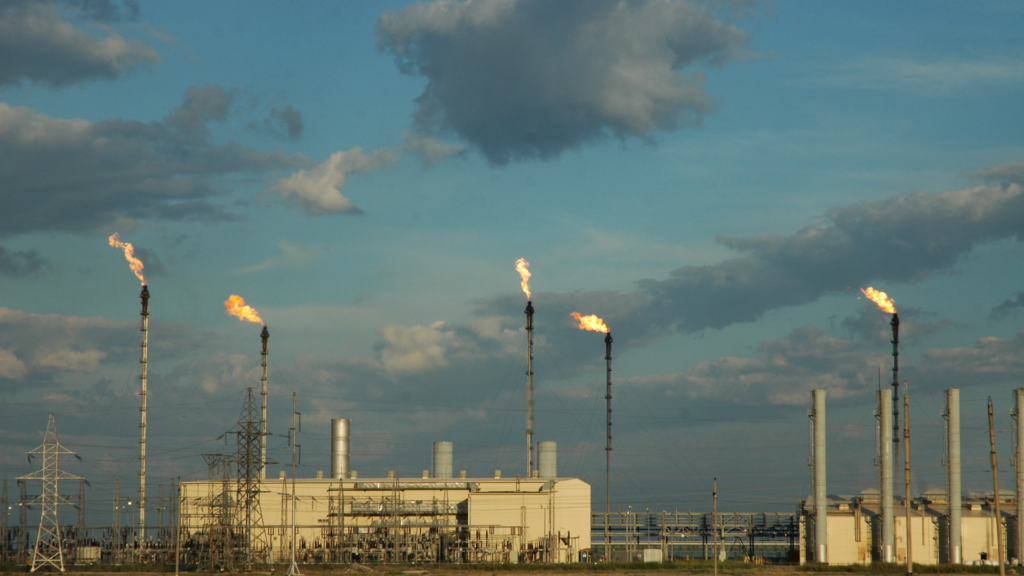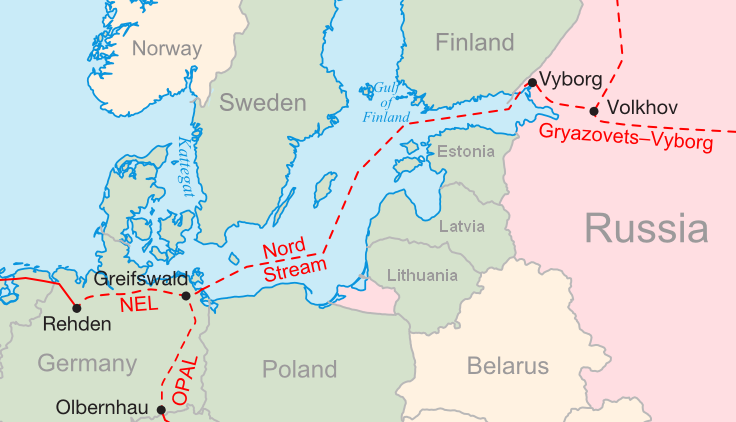Energy costs in Europe are rising, while Russia is burning huge amounts of natural gas that experts say was intended for export to Germany. A Russian gas plant near the Finnish border is burning an estimated €10 million worth of gas every day, according to a Rystad energy report shared with the BBC.
Whilst the news is a grave concern for economists, scientists fear that the large volumes of carbon dioxide and soot created will cause irreparable damage by melting arctic ice. The Rystad Energy analysis suggests that 4.34 million cubic meters of gas are being burned every day.
The flares come from a new LNG plant at Portovaya northwest of Saint Petersburg. Finnish citizens close to the border were the first to notice to flares.

Gas flares on a natural gas plant. Credit: Canva
Portovaya is close to a compressor station near the Nord Stream 1 pipeline, which carries gas through a pipeline under the sea to Germany. The gas delivered to Germany was drastically reduced in mid-July as a response to EU sanctions after Russia's invasion of Ukraine.
But in June, researchers noticed a significant uptick in heat emanating from the facility – thought to be from gas flaring, which is when natural gas is burnt.
Whilst burning flares can be a necessary means of preventing the release of methane (a key component of natural gas and with a warming effect 25 times stronger than CO2), this is normally done for technical or safety concerns and on a much smaller scale.
Russia's grip on the energy market
Experts have speculated about the reasons behind the gas flaring and conclude that this is most likely a political statement rather than for technical reasons: "While the exact reasons for the flaring are unknown, the volumes, emissions, and location of the flare are a visible reminder of Russia's dominance in Europe's energy markets," said Sindre Knutsson from Rystad Energy.
"There could not be a clearer message: Russia can bring energy prices down tomorrow if it wants. This is gas that would otherwise have been exported via Nordstream 1 or alternatives." Gazprom has not responded to a request for comment.
Countries in Europe are considering various measures to deal with the energy crisis. France has put a 4% price cap on rising energy costs, while Germany and Spain are bringing in energy-saving measures. In the UK, energy prices will go up by a whopping 80% since October 2021.
World's largest emitter of oil and gas-based methane
Gazprom has previously remained secretive when huge emissions have leaked. The Washington Post reported on gigantic volumes of methane emitted in 2021, which the news outlet discovered through satellite images. The Russian energy giant opted to remain quiet on the location of the plant.
Moreover, Russian statistics about emissions don't add up: "Russia claims that it emitted 4 million metric tons of methane from the oil and gas sector in 2019, the most recent year reported. But six studies and scientific emissions data sets reviewed by The Post, using various methods, found much higher annual numbers in recent years, in some cases two to three times as large."
Related News
- European gas price peaks to new record again
- Belgium fills gas reserves but winter shortages still likely
- 'End of abundance': Macron warns France of harsh winter to come
"The Paris-based International Energy Agency (IEA), an intergovernmental organization set up in the wake of the 1973 oil crisis, puts the country’s 2020 figure at nearly 14 million tons, which would make Russia the world’s largest emitter of oil and gas-based methane," the Washington Post wrote.

